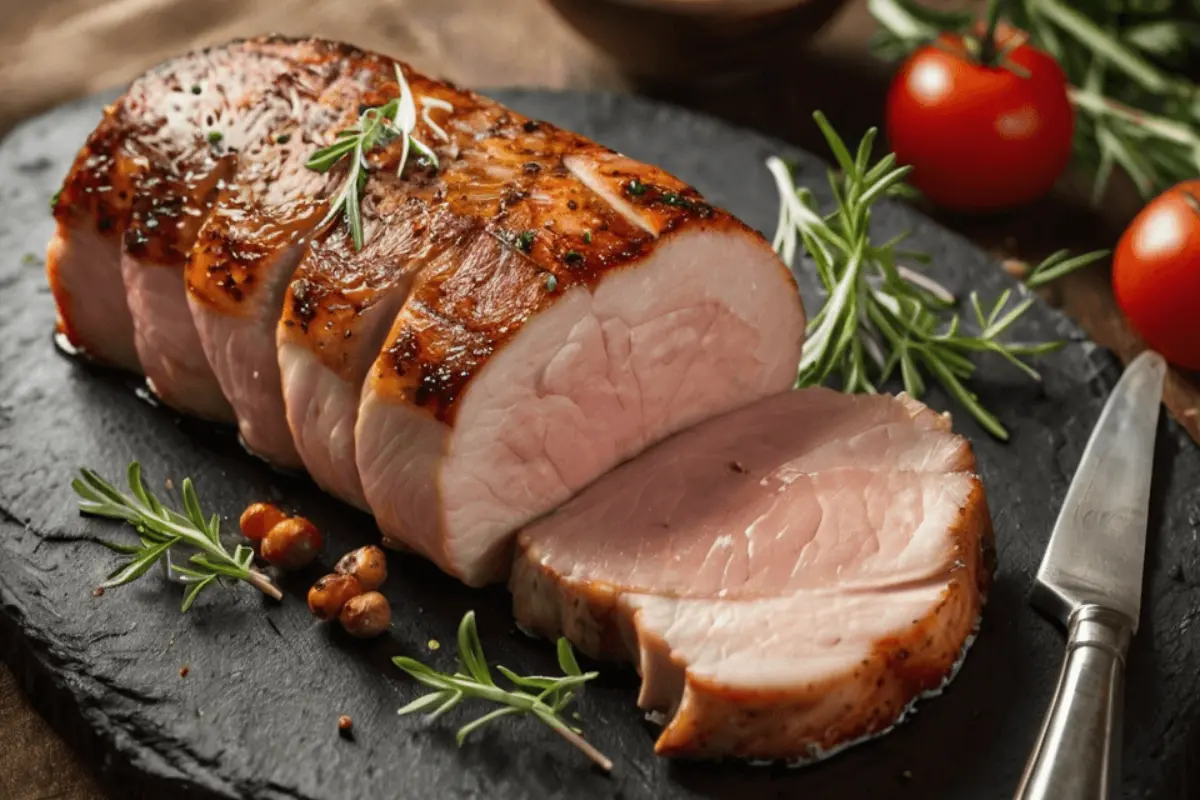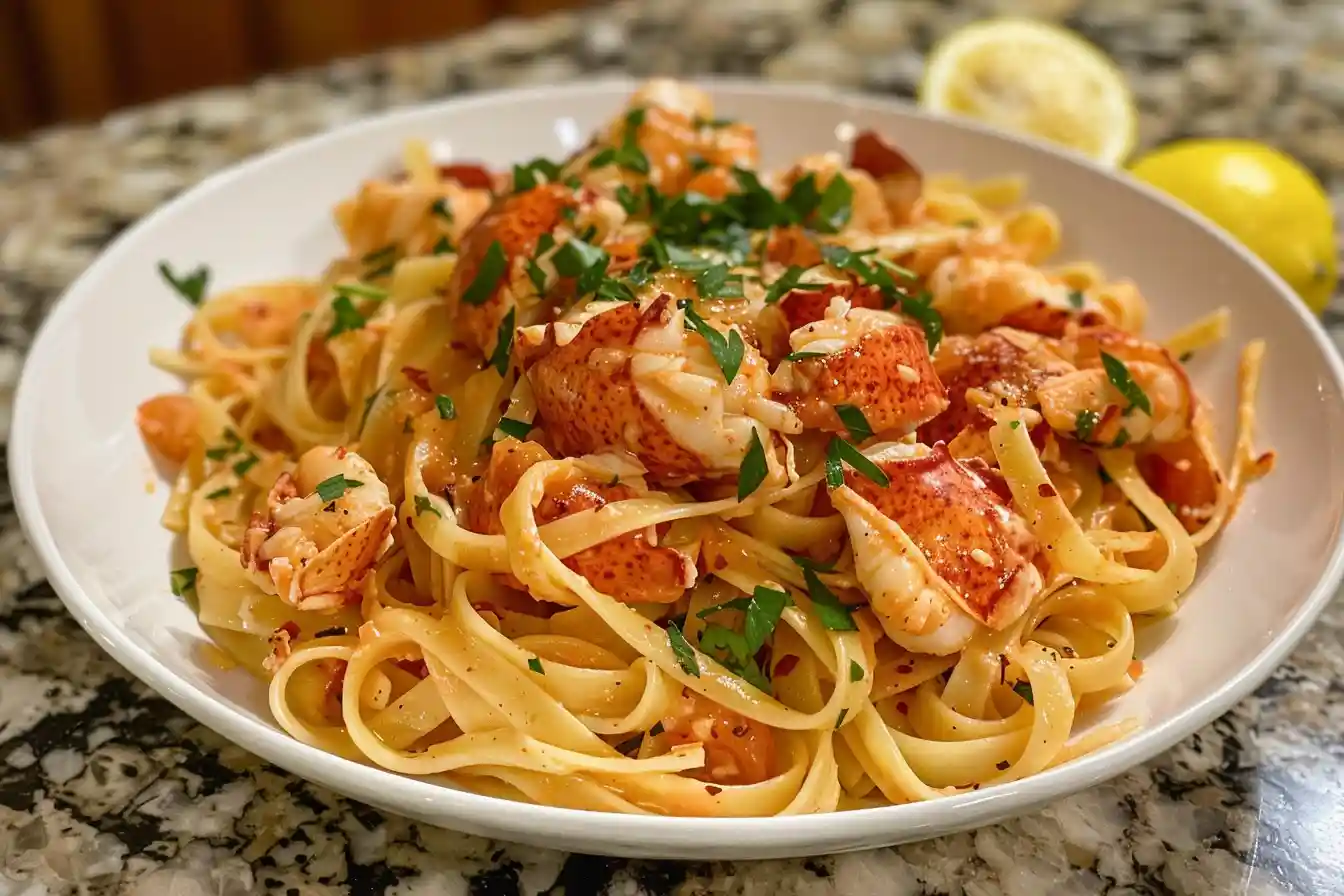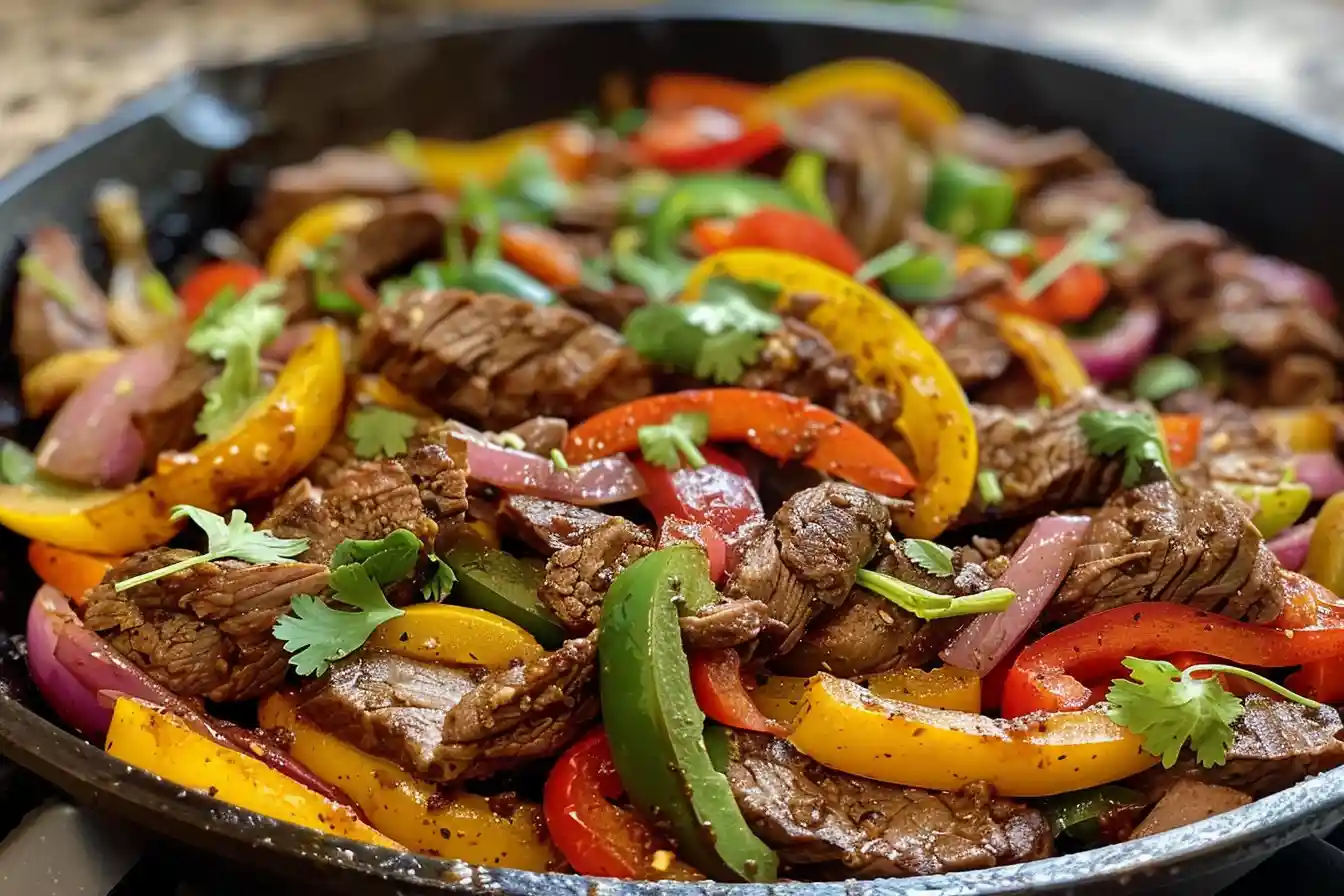When it comes to pork, two of the most popular cuts that often create confusion are pork loin and pork tenderloin. Although these cuts share some similarities in name and come from the same animal, they are quite different in terms of texture, flavor, cooking methods, and overall culinary application. Knowing how to distinguish between pork loin and pork tenderloin can make a significant difference in your cooking, ensuring that you choose the right cut for your recipe and prepare it to perfection.
In this guide, we’ll explore everything you need to know about pork loin and pork tenderloin, including their characteristics, cooking methods, nutritional differences, and more. By the end of this article, you’ll have a clear understanding of which cut is best for your next meal and how to cook it to bring out its best flavors.
What is Pork Loin?
Pork loin is a large, thick cut of meat that comes from the back of the pig, running from the shoulder to the hind leg. It is a versatile cut that is often used for roasting, grilling, or smoking. Pork loin is a favorite among home cooks and chefs alike due to its balance of lean meat and fat, which provides a juicy and flavorful result when cooked properly.
Characteristics of Pork Loin
Pork loin is usually sold as a large roast, though it can also be sliced into pork chops or cutlets. It has a thick layer of fat on the top, known as the fat cap, which helps keep the meat moist during cooking. The meat itself is lean with a fine grain, making it ideal for a variety of cooking methods.
- Size and Shape: Pork loin is typically large and cylindrical, weighing between 2 to 5 pounds. This makes it perfect for serving a crowd or for creating leftovers that can be used in sandwiches, salads, or other dishes.
- Fat Content and Marbling: Pork loin has a moderate amount of fat, mostly concentrated in the fat cap on top of the meat. This fat renders during cooking, adding flavor and moisture to the meat. The marbling within the meat is minimal, which means that the meat can dry out if overcooked.
- Flavor Profile: The flavor of pork loin is mild and slightly sweet, making it a blank canvas for a variety of seasonings and marinades. It pairs well with both sweet and savory flavors, such as garlic, herbs, citrus, and barbecue sauces.
Best Cooking Methods for Pork Loin
Pork loin is a versatile cut that can be cooked using several methods, each of which brings out different aspects of the meat’s flavor and texture.
- Roasting: Roasting pork loin is one of the most popular methods, as it allows the fat cap to render and baste the meat. To roast pork loin, preheat your oven to 375°F, season the meat with your choice of herbs and spices, and cook it for about 20 minutes per pound, or until the internal temperature reaches 145°F.
- Grilling: Grilling adds a smoky flavor to pork loin, making it perfect for summer barbecues. Use indirect heat to cook the pork loin slowly, turning it occasionally to ensure even cooking. A meat thermometer is essential for checking doneness, aiming for an internal temperature of 145°F.
- Smoking: Smoking infuses pork loin with a deep, rich flavor. Use hardwoods like apple, hickory, or oak for the best results. Maintain a smoker temperature of 225°F and cook the pork loin until it reaches an internal temperature of 145°F, which typically takes about 2 to 3 hours.
Common Mistakes to Avoid When Cooking Pork Loin
- Overcooking: Pork loin can dry out quickly if overcooked, so it’s important to monitor the internal temperature closely. The USDA recommends cooking pork to an internal temperature of 145°F, followed by a 3-minute rest period.
- Not Letting the Meat Rest: After cooking, let the pork loin rest for at least 10 minutes before slicing. This allows the juices to redistribute throughout the meat, resulting in a more flavorful and moist final product.
- Skipping the Fat Cap: While it may be tempting to trim off all the fat, leaving some of the fat cap on the pork loin will help keep the meat moist and add flavor during cooking.
What is Pork Tenderloin?
Pork tenderloin is a smaller, leaner cut of meat that comes from the muscle that runs along the backbone of the pig. It is one of the most tender cuts of pork, as the muscle it comes from does not bear much weight. This makes pork tenderloin ideal for quick-cooking methods like grilling, roasting, or pan-searing.
Characteristics of Pork Tenderloin
Pork tenderloin is typically sold in long, narrow pieces that weigh between ¾ to 1½ pounds. Because it is so lean, pork tenderloin cooks quickly and requires careful attention to prevent it from drying out.
- Size and Shape: Pork tenderloin is long and slender, making it easy to cook quickly and evenly. It’s perfect for weeknight dinners when you need a quick and healthy protein option.
- Fat Content and Marbling: Pork tenderloin is very lean, with little to no marbling. This means it’s important to avoid overcooking the meat, as it can become dry and tough.
- Flavor Profile: The flavor of pork tenderloin is mild and slightly sweet, similar to pork loin but with a more delicate texture. It pairs well with a variety of flavors, from tangy citrus marinades to bold spice rubs.
Best Cooking Methods for Pork Tenderloin
Pork tenderloin is best cooked quickly at high heat to preserve its tenderness. Here are some of the top methods for cooking pork tenderloin:
- Pan-Seared: Pan-searing is a quick and easy way to cook pork tenderloin. Heat a skillet over medium-high heat, add a bit of oil, and sear the tenderloin on all sides until browned. Finish cooking in the oven at 375°F until the internal temperature reaches 145°F.
- Grilling: Grilling adds a smoky flavor to pork tenderloin and is perfect for warm weather. Preheat your grill to medium-high heat, season the tenderloin with your favorite spices, and grill for 15-20 minutes, turning occasionally, until the internal temperature reaches 145°F.
- Oven-Roasted: Oven-roasting is a simple method that ensures even cooking. Preheat your oven to 400°F, season the tenderloin, and roast for 20-25 minutes, or until the internal temperature reaches 145°F. Let it rest before slicing.
Common Mistakes to Avoid When Cooking Pork Tenderloin
- Overcooking: Due to its leanness, pork tenderloin can become dry and tough if overcooked. Always use a meat thermometer to check for doneness, aiming for an internal temperature of 145°F.
- Underseasoning: Because pork tenderloin is so lean, it benefits from bold seasonings and marinades. Don’t be afraid to use strong flavors like garlic, ginger, or citrus to enhance the meat’s natural flavor.
- Skipping the Rest Period: Just like with pork loin, it’s important to let pork tenderloin rest after cooking. This allows the juices to redistribute, resulting in a juicier final product.
Nutritional Comparison
When choosing between pork loin and pork tenderloin, it’s important to consider their nutritional content. Both cuts are excellent sources of protein and essential nutrients, but they differ slightly in their calorie and fat content.
- Calories and Protein Content: Pork tenderloin is slightly leaner than pork loin, making it lower in calories. A 3-ounce serving of pork tenderloin contains approximately 120 calories and 22 grams of protein, while the same serving of pork loin contains about 160 calories and 24 grams of protein.
- Fat and Cholesterol Levels: Pork tenderloin is also lower in fat, with about 3 grams of fat per 3-ounce serving, compared to 7 grams of fat in pork loin. This makes pork tenderloin a better option for those looking to reduce their fat intake.
- Vitamins and Minerals: Both pork loin and pork tenderloin are rich in essential vitamins and minerals, including B vitamins (especially B6 and B12), zinc, and selenium. These nutrients are important for maintaining energy levels, supporting the immune system, and promoting overall health.

Recipe Ideas for Pork Loin
Pork loin is a versatile cut that can be used in a variety of recipes, from simple weeknight dinners to elegant holiday roasts. Here are a few ideas to get you started:
- Classic Roasted Pork Loin with Herbs: Season a pork loin with garlic, rosemary, thyme, salt, and pepper, and roast it in the oven until it reaches an internal temperature of 145°F. Serve with roasted vegetables and a side of mashed potatoes.
- Smoked Pork Loin with BBQ Glaze: Smoke a pork loin over applewood or hickory chips, and brush it with a tangy BBQ glaze during the last 30 minutes of cooking. Serve with coleslaw and baked beans for a classic BBQ meal.
- Grilled Pork Loin with Citrus Marinade: Marinate a pork loin in a mixture of orange juice, lime juice, garlic, and cilantro, and grill it over medium heat until it reaches 145°F. Serve with grilled corn and a fresh green salad.
Recipe Ideas for Pork Tenderloin
Pork tenderloin is a tender and lean cut that shines in a variety of recipes, offering quick cooking times and the ability to absorb flavors beautifully.
- Garlic Herb-Crusted Pork Tenderloin: Coat a pork tenderloin with a mixture of minced garlic, rosemary, thyme, salt, and pepper. Sear it in a hot pan, then transfer it to the oven and roast at 400°F until it reaches an internal temperature of 145°F. Serve with roasted vegetables and a drizzle of balsamic glaze.
- Grilled Pork Tenderloin with Honey Mustard: Marinate pork tenderloin in a mixture of honey, Dijon mustard, soy sauce, and garlic. Grill over medium-high heat, turning occasionally, until it reaches 145°F. Slice and serve with grilled asparagus and a quinoa salad.
- Balsamic-Glazed Pork Tenderloin: Sear the pork tenderloin in a hot pan, then brush it with a balsamic reduction and finish roasting in the oven. The balsamic glaze adds a tangy sweetness that pairs well with the tender meat. Serve with a side of mashed sweet potatoes and steamed green beans.
Pairing Pork Loin and Tenderloin with Sides
Both pork loin and tenderloin are versatile enough to be paired with a wide range of side dishes. Here are some ideas to complement each cut:
Best Sides for Pork Loin
- Roasted Root Vegetables: The hearty flavors of roasted carrots, potatoes, and parsnips complement the richness of pork loin.
- Apple Sauce or Chutney: The sweetness of apples pairs beautifully with the savory flavor of pork.
- Creamed Spinach: A rich and creamy side that adds a luxurious touch to your meal.
Best Sides for Pork Tenderloin
- Grilled Vegetables: Light and fresh grilled zucchini, bell peppers, and asparagus balance the lean pork tenderloin.
- Quinoa or Couscous: These grain-based sides offer a light and nutritious accompaniment.
- Citrus Salad: A refreshing citrus salad with oranges, grapefruit, and arugula adds a bright contrast to the tender pork.
Sauces and Condiments to Elevate Your Dish
- BBQ Sauce: A smoky, tangy BBQ sauce pairs well with both pork loin and tenderloin.
- Chimichurri: This vibrant, herbaceous sauce adds a fresh, zesty flavor to your pork dishes.
- Mustard Cream Sauce: A rich mustard sauce adds a tangy, creamy element that complements the mild flavor of pork.
Pork loin and pork tenderloin are both delicious and versatile cuts of meat that offer unique flavors and textures. Understanding the differences between these cuts, from their characteristics to their best cooking methods, can help you choose the right one for your next meal. Whether you’re roasting a pork loin for a family dinner or grilling a pork tenderloin for a quick weeknight meal, both cuts offer endless possibilities for creating tasty and satisfying dishes.
Experiment with different seasonings, cooking techniques, and side dishes to discover your favorite way to enjoy these popular cuts of pork. And remember, whether you prefer the richness of pork loin or the tenderness of pork tenderloin, both can be part of a healthy and delicious diet.
Frequently Asked Questions
While both cuts come from the same animal, they are not interchangeable in recipes due to differences in size, fat content, and cooking times. Pork loin is larger and requires longer cooking, while pork tenderloin is leaner and cooks quickly.
Cooked pork loin and tenderloin can be stored in the refrigerator for up to 4 days in an airtight container. For longer storage, you can freeze them for up to 3 months. Be sure to reheat them gently to avoid drying out the meat.
The best way to reheat pork loin and tenderloin is in the oven at a low temperature (around 275°F) until warmed through. This method helps retain moisture and prevents the meat from becoming tough.
Pork tenderloin is slightly healthier due to its lower fat content and fewer calories. However, both cuts are excellent sources of lean protein and provide essential nutrients like B vitamins and selenium.
Yes, you can use the same marinades for both pork loin and tenderloin. Just be mindful of the different cooking times and methods required for each cut to ensure the best results.





